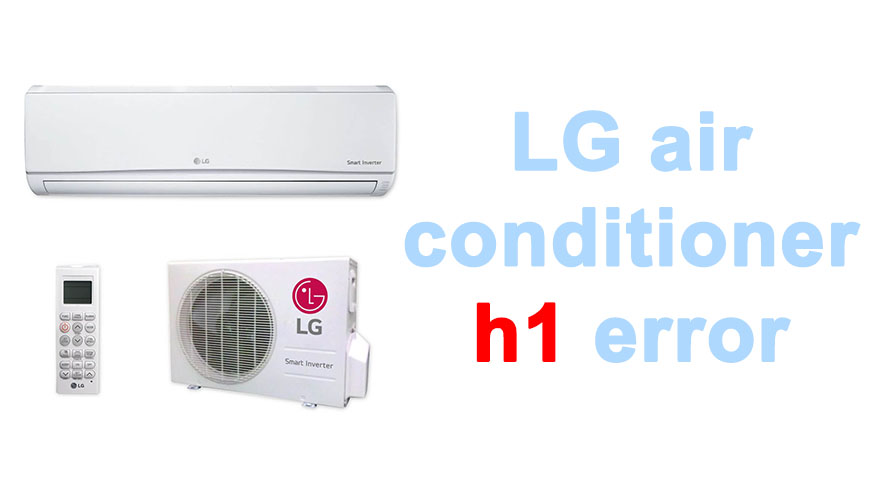LG air conditioners are globally recognized for their innovative technology, user-friendly interface, and superior performance. Despite being equipped with high-tech components and advanced features, they may occasionally encounter issues, just like any other appliance. One commonly encountered issue in LG air conditioners is the ‘H1 error.’ This article will provide an in-depth understanding of the H1 error, the reasons behind its occurrence, the steps to rectify it, and the preventive measures that can be taken to avoid such errors in the future.
Understanding the H1 Error
The H1 error is a specific code displayed on LG air conditioners, signaling a problem with the appliance’s defrosting system. This error mainly occurs in the heating mode when the outdoor unit of the air conditioner freezes due to the low external temperature, hindering the appliance’s normal operation.
Primary Causes of H1 Error
The H1 error in LG air conditioners can be attributed to several factors. Temperature is a significant influencer. LG air conditioners are equipped with built-in sensors designed to activate the defrosting system when the temperature outside drops below a certain threshold. However, if this defrosting system fails to activate as required, it can result in ice accumulating on the outdoor unit, triggering the H1 error.
Faulty sensors, a malfunctioning defrosting system, a defective outdoor fan, or a faulty PCB (Printed Circuit Board) could all contribute to the H1 error. Moreover, problems in the refrigeration system of the air conditioner, such as refrigerant leakage or blocked capillary tubes, could also be a cause for this error.
Troubleshooting the H1 Error
While professional help is always advisable when dealing with such technical issues, certain general troubleshooting steps can be taken to identify the root cause of the problem:
- Check External Conditions: First and foremost, visually inspect the outdoor unit for any visible ice build-up. If ice is present, this suggests a malfunction in the defrosting system.
- Sensor and PCB Inspection: If there is no visible ice build-up, the next step is to inspect the sensor and the PCB. This should only be attempted if you have some knowledge of air conditioner components.
- System Reset: Another simple step you can try is resetting the system. Switch off the air conditioner, wait for a few minutes, and then switch it back on. This action can sometimes resolve minor issues.
Professional Repair and Preventive Measures
The H1 error, despite seeming simple, often requires a professional diagnosis and repair. Experts can conduct a comprehensive examination of the defrosting system, sensors, PCB, and the overall refrigeration system to identify the exact cause of the issue. They can replace defective parts, make necessary adjustments, or suggest changes in the setup to ensure that your air conditioner functions smoothly.
Preventive measures for avoiding the H1 error majorly involve regular maintenance. Regularly servicing your air conditioner can help spot potential issues before they develop into significant problems. During the cold season, keep an eye on the outdoor unit for any ice build-up. Clearing any blockages and ensuring the unit is free from ice can prevent the H1 error from occurring.
Maintaining the Appliance Post-Repair
Once the H1 error is resolved, regular maintenance of the air conditioner becomes essential to prevent the recurrence of the issue. Always keep a check on the outdoor unit, especially during the winter season. Ensure that the defrosting cycle works correctly and that there’s no excess ice formation. Regular cleaning and timely servicing can also help in maintaining the optimal performance of the air conditioner.
Conclusion
While LG air conditioners are built with high-quality components and advanced technology, the occasional H1 error may surface. Having a good understanding of its causes, troubleshooting steps, and preventive measures can help users manage such situations more effectively. However, it’s important to note that professional help should always be sought for complex issues to prevent causing further damage to the appliance. The key to keeping the H1 error at bay lies in regular maintenance, which ensures the air conditioner’s smooth and efficient operation.
